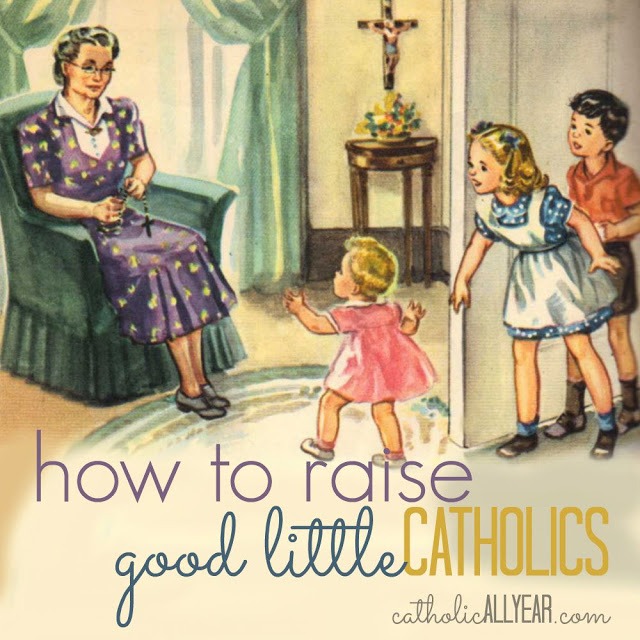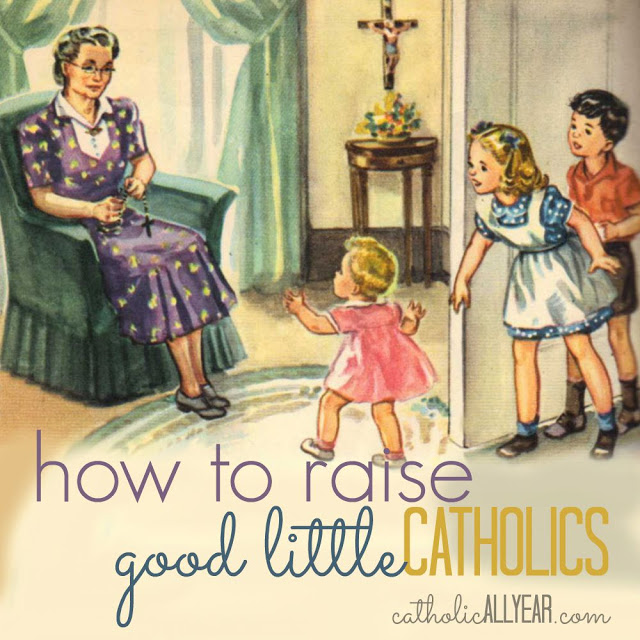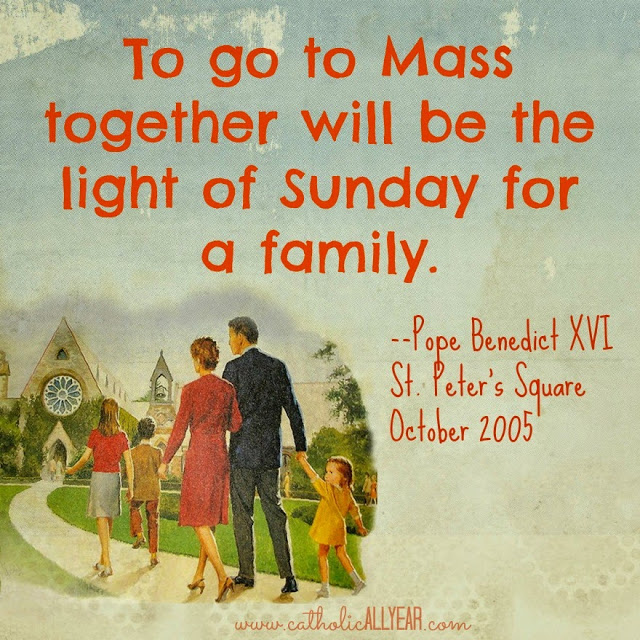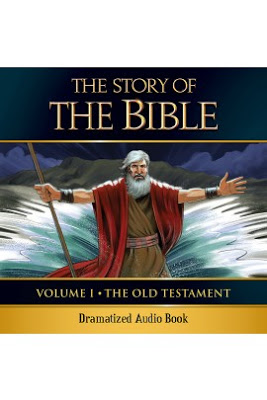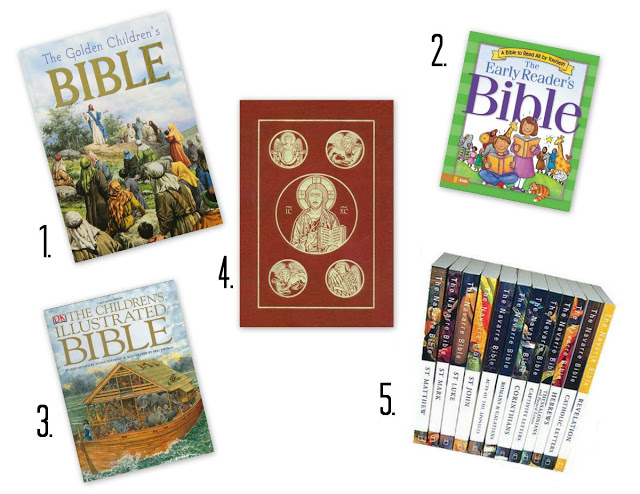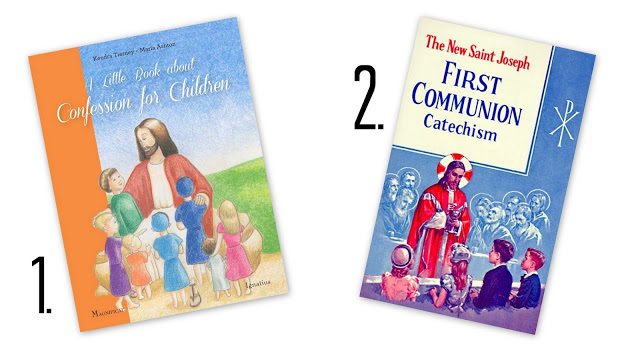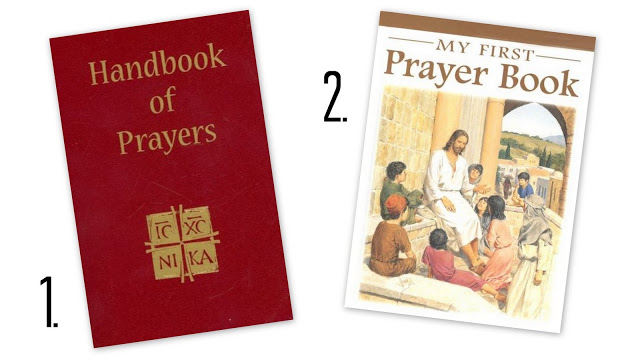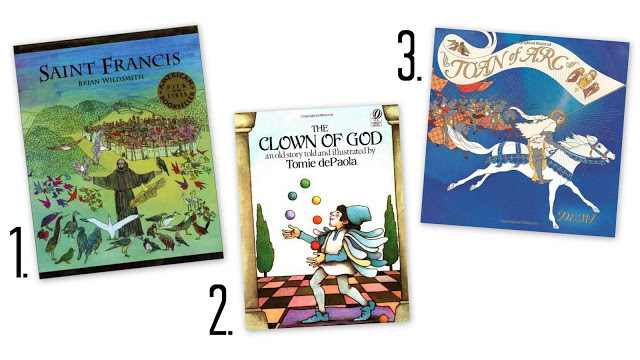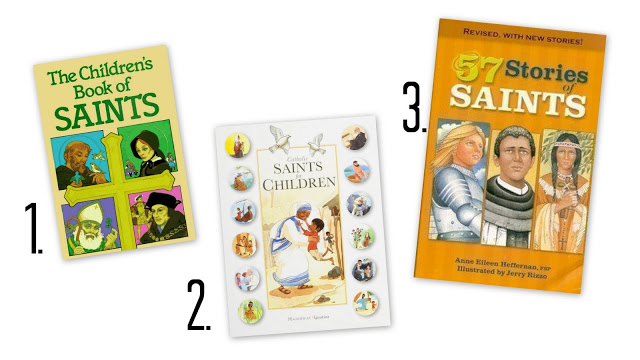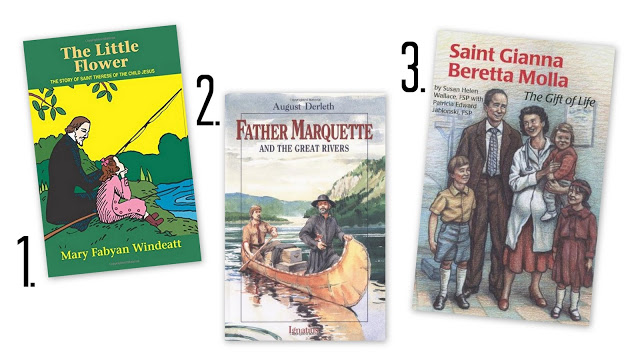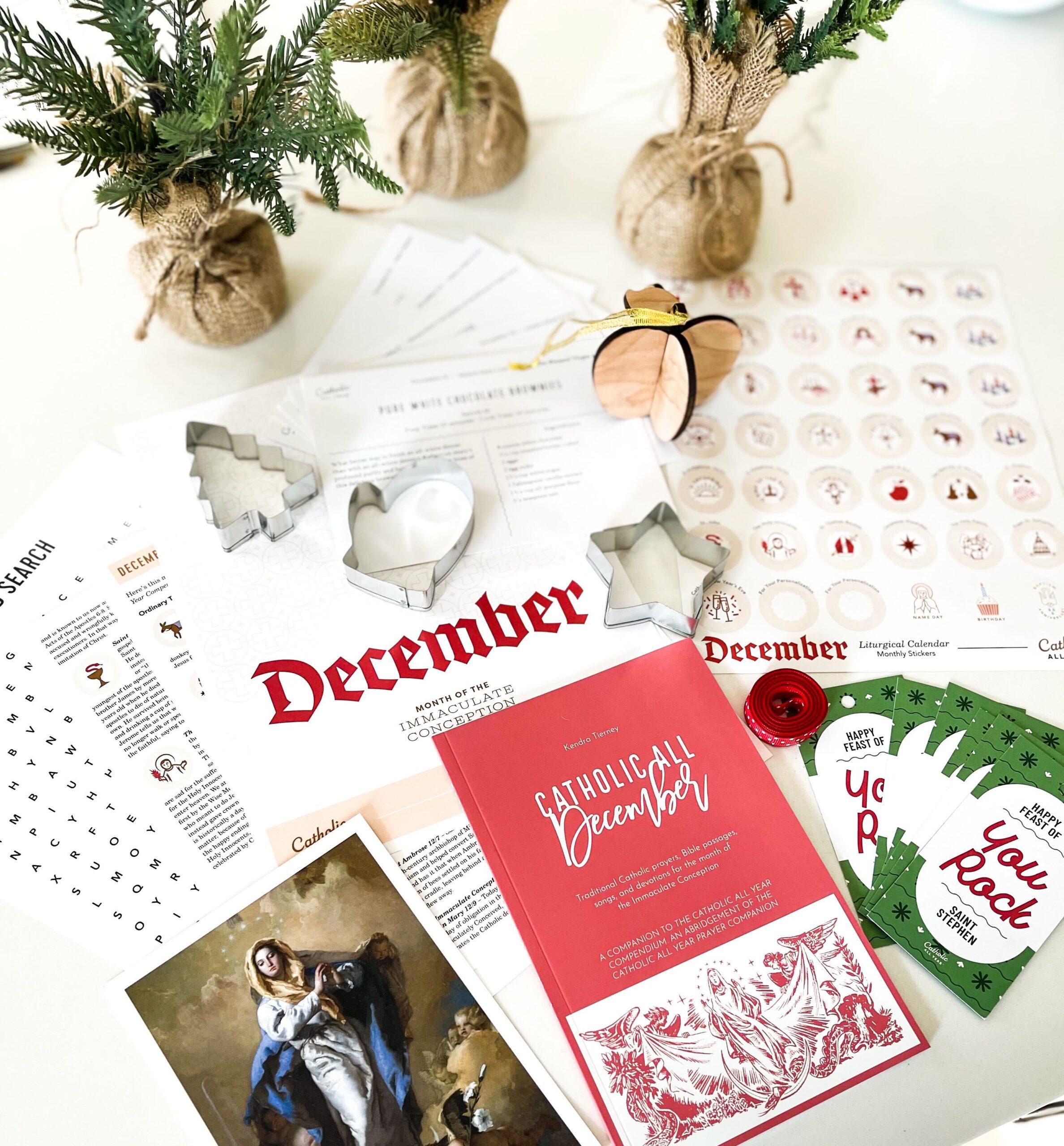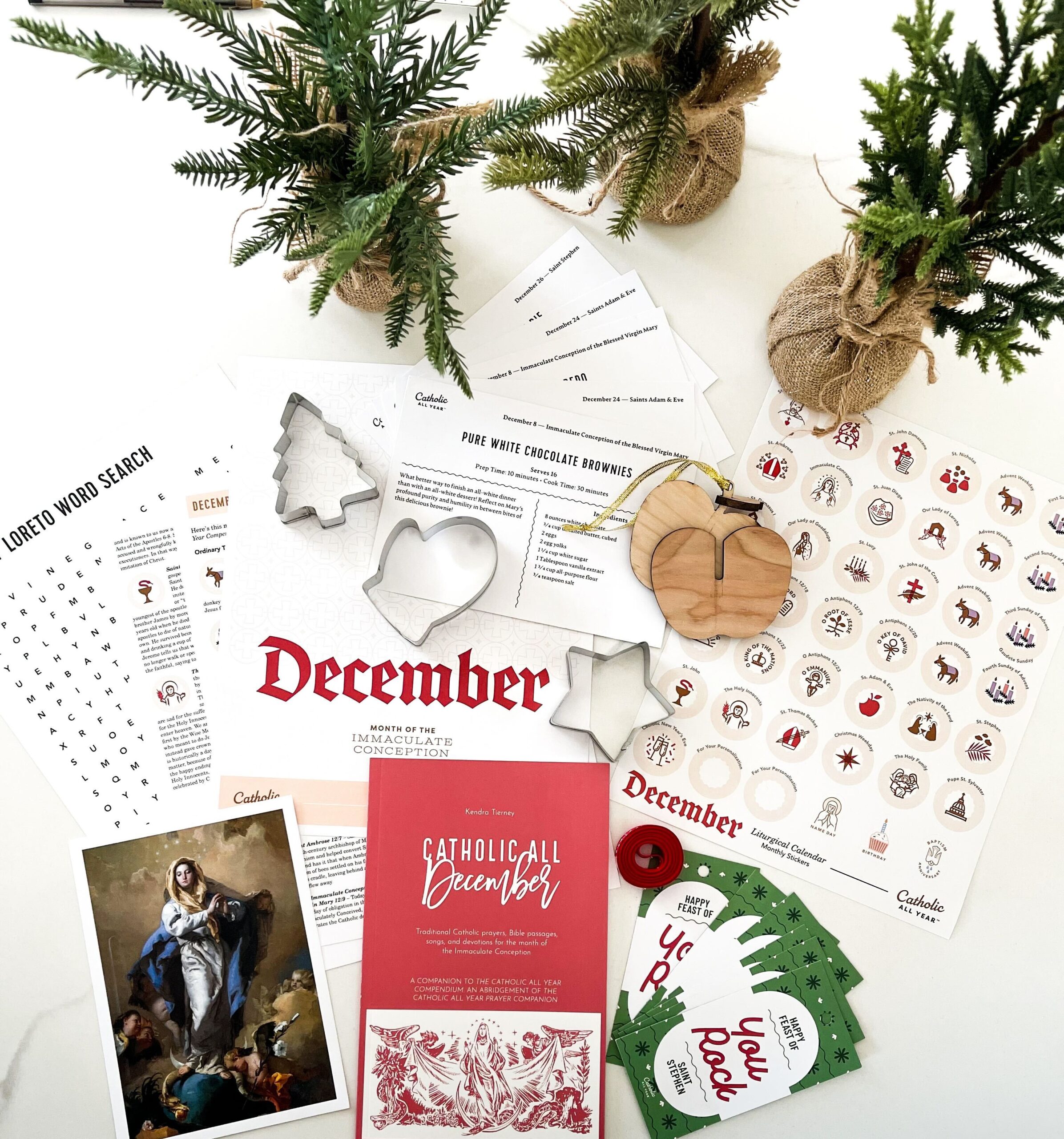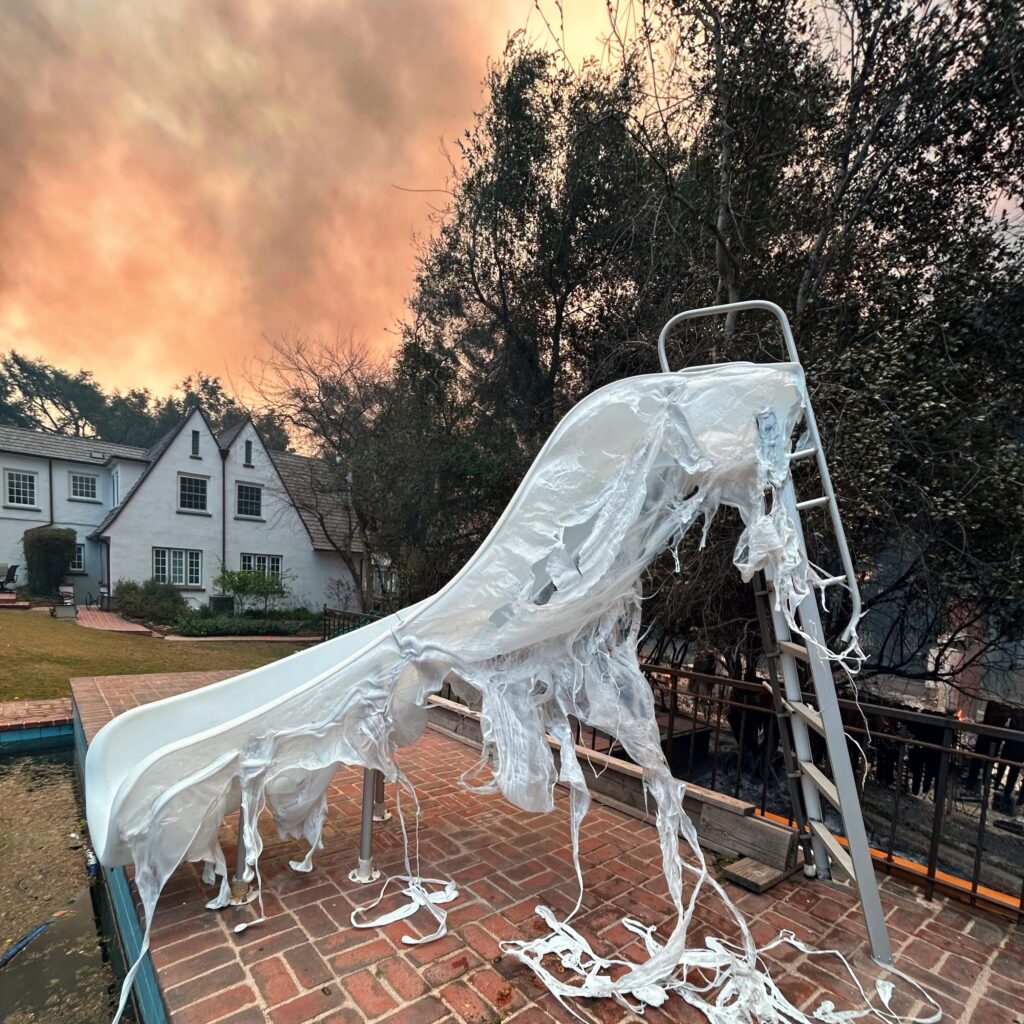Something I get asked about quite often is what we’re doing with our kids to help to raise them to have an understanding of and an appreciation for our Catholic faith. It’s a tough question, but a very important one. Whether our kids are homeschooled, or go to Catholic school, or public school it is OUR responsibility as parents to make sure our kids learn about our faith.
The good news is it’s never too early and never too late to start. And there’s no better motivation for learning about our faith than having kids who ask us about it. I know about 1000% more about being Catholic than I did before I had kids.
Our Catholic faith is multifaceted, and so rich that you could spend a lifetime studying it and never run out of things to learn. But you’ve got to start somewhere. Here’s where we focus:
1. The Mass
On a scale of importance from one to ten, this is an eleven. Go to Mass. I favor attending Mass as a family, even if it means nursing babies in the pew, and taking screaming one-year-olds out over and over again. We make it a priority and we make it work.
But I know that doesn’t work for every family. If you and your husband need to split up and not bring children to Mass that are below the age of reason, then so be it. But we get to Mass every. single. Sunday. Every. single. holy day of obligation. Even if we’re traveling, or we have company, or the kids have sporting events, or we have a ton of stuff to do, or we’d rather sleep in.
We have made a commitment to go to Mass, at least on Sundays and holy days of obligation, more often if we can swing it. ME going to Mass is the most important thing I can do for the faith of my children.
2. The Bible
Being familiar with God’s word is also important. We want the stories of the Bible to be a part of the fabric of our family life. My kids should know the heroes of the Old Testament, and the lessons of the New Testament at least as well as they know the marvel superheroes and the wild animal lessons of the Kratt brothers.
But, how to manage it? We’re all busy.
I love to use the car for stuff like this. The kids are strapped in, they’re a captive audience. Might as well use it for good. And, now, you really REALLY can. TAN books has just come out with a whole program, aimed at homeschooling families, called The Story of the Bible. It’s got books (one volume each for the Old and New Testaments), a teacher’s guide, an activity book and test book for kids, even a video lecture series . . . the whole shebang. If you’re looking for a complete Catholic Bible program, look no further.
But BY FAR my favorite part of the system (available separately) is the Dramatized Audio Books. They are excellent. They are professionally done with voice actors and sound effects and you get to listen to the WHOLE Bible, in a very entertaining way. My kids really like the CDs and ask to listen to them. It’s perfect.
We also make a point of having Bibles around the house, accessible to the kids. Since we have a wide range of ages (currently 0-13) around here, we also keep a range of Bibles on hand. (Clicking on the title of the book will take you to Amazon through my Affiliate link. Thanks!)
- The Golden Children’s Bible
: For the youngest kids, we use this for reading Bible stories aloud. The kids like the illustrations, and the stories are complete but not overwhelming.
- Early Readers Bible
: For kids ready for easy readers, this is a Bible they can read themselves and feel like a big kid. The stories are obviously very simplified, but I think it’s good to have around.
- The Children’s Illustrated Bible
: This one is great for kids in middle grades who have six million questions that you don’t know the answers to. It’s got TONS of descriptive asides about clothing, weapons, customs, geography, food, everything.
- The Ignatius Bible
: For older kids, we want them to have access to the real thing. That means a GOOD translation of a CATHOLIC Bible. Ideally, a beautiful leather-bound hardback copy so that it feels like something special. This is a good one.
- Navarre Study Bible
: For kids and grownups who want to get even more in depth, the Navarre Study Bibles are an amazing resource. The Bible is divided up into many individual volumes, and there are TONS of footnotes explaining everything you could ever possibly wonder about.
3. The Sacraments
Catholic kids should have the sacraments. They are powerful tools with both magical and practical aspects. The magic is that they give us the grace we need from God to live faithful Catholic lives, and the practical aspect is that they give us reminders that we can touch and taste and experience of God’s love for us.
These days, we baptize our babies just as soon as possible. Our oldest was three months old when he was baptized, but with our most recent few, they’ve all been baptized within a week or so. No sense putting it off without good reason.
We prepare our kids at home to receive First Confession and First Communion, using these two books:
- A Little Book about Confession for Children
: I wrote this one, because there really weren’t any other books I liked on confession available. It’s intended to be used to prepare for first confession, and then to get ready for each subsequent confession after that.
- Saint Joseph First Communion Catechism
: This is the classic 1960s Baltimore Catechism. It can be intense, when you’re used to more modern “God made rainbows and Jesus hugs deer” type religion books. But I think it’s great.
We make sure our older kids have regular access to confession and communion once they’ve made their first.
For older kids, there’s the Youcat, and the Catechism of the Catholic Church, along with the Compendium are great resources for every Catholic home.
4. The Rosary and Other Prayers
Daily prayer can be really hard to begin, but once it’s a habit, it really does become easier. And, again, there’s no better inspiration than kids for getting started. Before I had kids, I could recite the Our Father and the Hail Mary, and that’s just about it.
But wanting my kids to learn traditional Catholic prayers has meant I’ve learned them too.
On an ideal day, in the morning we recite the Morning Offering and the Guardian Angel Prayer, at noon we say the Angelus, in the car or after dinner we say the Rosary, and before bed we say the Our Father and the Act of Contrition.
Not every day is an ideal day, of course. Our minimum is a Morning Offering and the Our Father before bed, but mostly we can do better than that.
We also incorporate some special prayers throughout the year, like the Stations of the Cross during Lent, an Advent Novena, the Litany of Our Lady on Marian Feast Days, and the Seven Sundays of St. Joseph.
We don’t have to do much to teach the little ones the prayers, they sort of just pick it up as they go along. But if you’re starting with older kids (like I did), you can work on learning them together, one line at a time, a couple of lines per day. And, eventually, you’ll find you have quite a repertoire.
These are the prayer books we use:
- Handbook of Prayers
: This one is very thorough. It’s got all the basic prayers, plus special ones, meditations on the mysteries of the rosary and the stations of the cross, as well as the parts of the mass, the liturgy of the hours, and confession preparation.
- My First Prayer Book
: The children’s prayer book we have appears to be out of print, but this one looks similar. Mostly kids will learn the prayers by reciting them alongside the family, but some kids like to have their own prayer book.
5. Saint’s Lives
We’ve got a LOT of lives of the saints books in this house. A LOT lot. But I think it’s important to give my kids examples of faithful Catholics when they are growing up in a culture that has priorities and values that are so far removed from our own.
Again, because we have a wide range of ages, we have a wide range of books. And there are so many available that I’m not even sure how to begin here.
Some of our favorite Catholic picture book authors are: Brian Wildsmith, Tomie dePaola
, and Demi
, but there are a ton of great ones.
- Saint Francis
by Brian Wildsmith - The Clown of God
by Tomie dePaola - Joan of Arc
by Demi
For older kids there are many lovely compendiums that give kids a quick look at many different saints.
- The Children’s Book of Saints
: Concise one page summaries of fifty well-known saints, along with illustrations and prayers.
- Catholic Saints for Children
: Thirty short summaries of saints’ lives, with illustrations, and prayers.
- 57 Stories of Saints
: A larger book, in black and white, written in a modern, conversational style, with four to six pages per saint.
For kids ready for chapter books, there are a number of different series’ of chapter books featuring a detailed look into the life of one particular saint. The three with which we are most familiar are Saints Lives by Windeatt, the Vision Book Series
, and Encounter the Saints
.
- The Little Flower: The Story of St. Therese of the Child Jesus (Saints Lives)
- Father Marquette and the Great Rivers (Vision Book)
- Saint Gianna Beretta Molla: The Gift of Life (Encounter the Saints)
6. The Liturgical Year
And now that we KNOW about all of these saints, we try to celebrate with them as well. Living the liturgical year in our home a bit has been a wonderful way for our family to connect with the rich history of our church, and to remember how fun and awesome it is to be Catholic.
We started off with having a special meal and a dessert of the child’s choosing for his or her baptism day and saint name day, and from there we’ve also added special dinners for other saints to which our family has a special devotion. We’ll usually end up celebrating three to six saints per month, but I was going to make dinner anyway, so it’s not too much trouble to make sure I make meatballs for St. Bridget of Sweden’s day.
I love Haley and Daniel Stewart’s liturgical year cookbook, Feast!: Real Food, Reflections, and Simple Living for the Christian Year
:
Other than that, blogs are a great resource for ideas on how to celebrate the liturgical year in your home. Some of my go-to’s are:
- This blog: here are my liturgical year posts featuring food, desserts, and simple activities
- Carrots for Michaelmas: Recipes and ideas for keeping things simple and focused
- Catholic Icing: Crafts and activities
- Waltzing Matilda: Coloring pages
- Catholic Culture: History, tradition, recipes, activities
- The Catholic All Year Membership – liturgically themed recipes, feast day activities, and prayers; all planned by the CAY Team so that you just have to show up and celebrate with your family!
If you’re new to all of this . . . START SMALL AND SIMPLE. Don’t try to do it all at once. Do try to find other Catholic families, because being on this journey together with friends makes all the difference.
I hope this helps a bit!
You might also like these posts:

